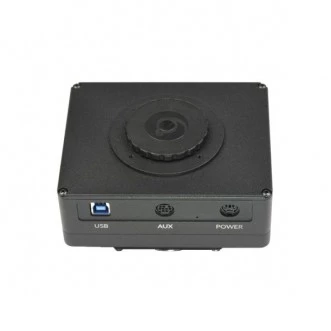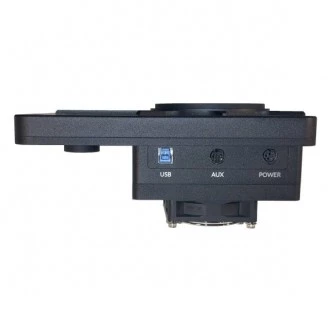Description
The SBIG STC-428-P Photometric CMOS Imaging System is a groundbreaking advancement in the realm of scientific imaging, offering a significant leap over traditional CCD technology. At its core is the high sensitivity, low noise 7-megapixel Sony IMX428 imaging sensor, which delivers exceptional image quality. This sensor is designed to capture both bright and faint targets with remarkable clarity, thanks to its electronic global shutter that supports fast exposure times ranging from 0.001 to 3600 seconds. This feature ensures that users can capture images with precision and speed, making it ideal for a variety of scientific applications.
One of the standout features of the STC-428-P is its SmartCooling™ active temperature regulation, which maintains the sensor temperature to within 0.1°C. This precise temperature control not only enhances calibration stability but also extends the lifespan of the camera by minimizing fan speed based on heat sink temperature. This results in quieter operation and ensures that the camera performs optimally in various environmental conditions.
The STC-428-P also includes the innovative StackPro™ automatic in-camera sub-exposure stacking capability. This feature allows the camera to divide exposures into up to 16 shorter sub-exposures and stack them internally before downloading. This process significantly increases the dynamic range without imposing additional processing demands on the host computer. The result is an imaging system that offers greater sensitivity and dynamic range than previously possible with CCD technology, making it a powerful tool for astronomical photometric measurements.
Designed with user convenience in mind, the STC-428-P is equipped with an eight-position FW8-STC filter wheel, allowing for the use of optional 36mm unmounted or 1.25" threaded filters. One slot is configured as a dark frame shutter, eliminating the need to cover the telescope for dark frames. Additionally, the camera supports high-speed USB 3.0 interface for rapid data transfer, with the option to use USB 2.0 for longer cable lengths. This ensures compatibility and ease of use across different setups.
The STC-428-P is compatible with the SBIG StarChaser SC-2 off-axis guiding camera, providing accurate tracking and supporting the AO-8A adaptive optics unit for achieving crisp, tight stars. With the included MaxIm LT control software, users can get up and running quickly, making the STC-428-P an ideal choice for both amateur and professional astronomers seeking high-performance imaging capabilities.
SBIG STC-428-P Photometric CMOS Imaging System
Specifications
| Sensor Type: | CMOS |
|---|---|
| # Pixels (Width): | 3208 |
| # Pixels (Height): | 2200 |
| Pixel Size (Square): | 4.5 um |
| Peak Quantum Efficiency: | 78 % |
| Bit Depth: | 12 bit |
Features
- High Sensitivity, Low Noise Sensor: Equipped with a 7 megapixel Sony IMX428 imaging sensor for superior image quality.
- SmartCooling™ Technology: Active temperature regulation to 0.1°C ensures high calibration stability and longer sensor life.
- Electronic Global Shutter: Offers fast exposure times ranging from 0.001 to 3600 seconds, ideal for capturing both bright and faint targets.
- Versatile Filter Wheel: Includes an eight-position FW8-STC filter wheel compatible with 36mm unmounted or 1.25" threaded filters, featuring a dark frame shutter slot.
- High-Speed USB Interface: Supports USB 3.0 for fast data transfer or USB 2.0 for extended cable length.
- Compatible with SBIG StarChaser SC-2: Enables accurate off-axis guiding for precise tracking.
- Rapid Downloads: Achieves download speeds under 90 milliseconds, significantly faster than traditional CCDs.
- Adaptive Optics Support: Compatible with AO-8A adaptive optics unit via StarChaser SC-2 for enhanced star sharpness.
- StackPro™ Technology: In-camera sub-exposure stacking conserves disk space and allows for longer effective exposures.
- MaxIm LT Control Software: Provides easy setup and operation from the first night.
- Advanced Cooling System: Features regulated two-stage cooling with a delta T of -30°C for optimal performance.
- Developer-Friendly: Offers a multiplatform software API and sample code for seamless application development.
- Enhanced Photometric Performance: Designed for astronomical photometric measurements with greater sensitivity and dynamic range than CCD technology.
Applications
- Astronomical Photometry: Ideal for precise brightness measurements of stars and variable objects.
- Deep-Sky Imaging: Captures faint nebulae, galaxies, and star clusters with high dynamic range.
- Exoplanet Research: Enables transit photometry with low noise and high sensitivity.
- Observatory Integration: Suitable for professional and educational observatories requiring advanced imaging.
- Adaptive Optics Systems: Works with SBIG StarChaser SC-2 for precision tracking and AO correction.
Frequently Asked Questions
What are the key differences between the STC-428-P and previous CCD models?
How does the STC-428-P achieve greater dynamic range?
Can the STC-428-P automatically divide exposures into shorter sub-exposures?
What is the temperature regulation capability of the STC-428-P?
Is the STC-428-P compatible with other accessories?
Similar Products
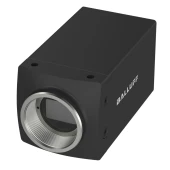
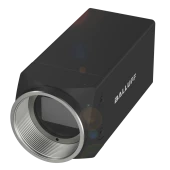
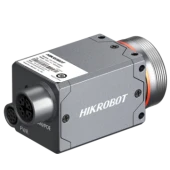
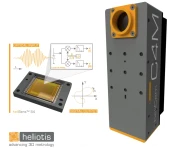


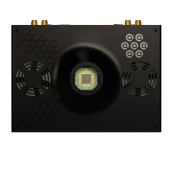
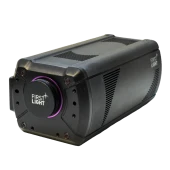
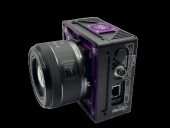
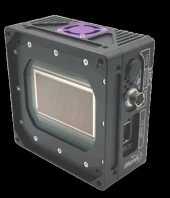
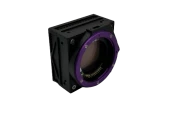
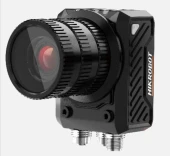
Your inquiry has been received.
Create an account by adding a password
Why create an account?
- Auto-complete inquiry forms
- View and manage all your past messages
- Save products to your favorites
- Close your account anytime — no hassle
